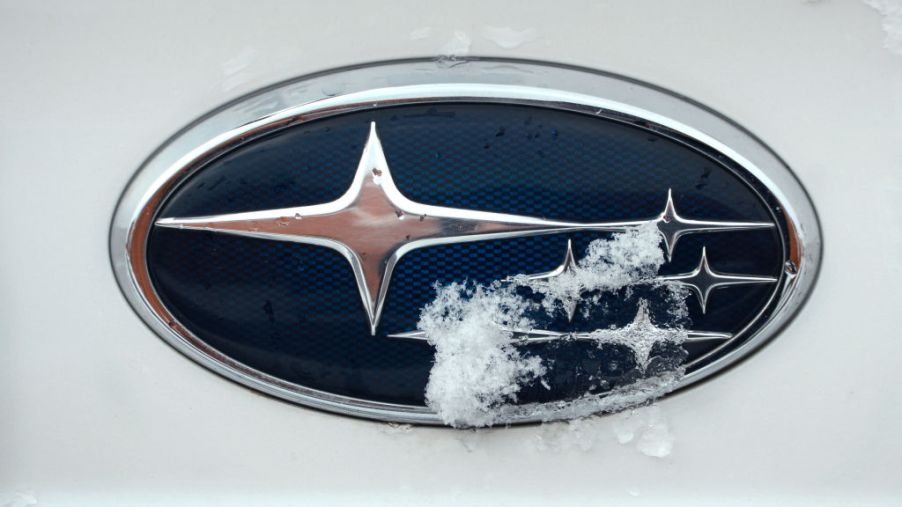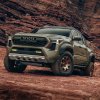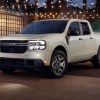
This Unusual Truck Has Seen a Spike in Value
Some vehicles are nearly instant successes as soon as they hit the market, while others are history before most people even know about them. Then there is a third group, like the Subaru Baja, which develops a following and becomes even more desirable years after production has ended. So what caused the downfall of this truck and why is its value starting to spike again?
The history of the Subaru Baja
In 2003 Subaru introduced the Subaru Baja, a unique blend of pickup truck and four-door coupe, to United States auto buyers. The Baja was a version of the popular Subaru Outback station wagon, which was first introduced in 1994 and continues to be in production today.
Designed as a sport vehicle, the Baja featured Subaru’s all-wheel-drive technology and a 41.5 inch long open cargo bed for pickup truck versatility. Named for the celebrated Mexican peninsula that is home of the Baja 1,000 off-road race, the four-door, four-passenger utility vehicle was marketed to a new generation of adventurers.
The Baja’s look paid tribute to off-road rally-race trucks while offering the ride, handling, and passenger capabilities of a traditional sedan. Despite its off-road, rally-like appearance and full-time all-wheel drive, the extended pickup bed and lowered front fascia reduced the truck’s approach and departure angles, limiting its use as an off-road vehicle.
While the reviews were positive and Subaru executives saw the Baja as a modest success, manufacturing ended in 2006. However, it is still very possible to find a used Baja today.
Features and capabilities
In their initial review of the Baja, Car and Driver magazine applauded the vehicle for its soft ride and responsive handling, stating that the truck was well suited for everyday driving even if you never used the pickup bed. They did note that while the truck was available with either a manual or automatic transmission and had a towing capacity of 2,400 pounds, the only available engine was a 165 horsepower, 2.5-liter four-cylinder.
The 2003 Baja was well-appointed featuring a power sunroof, leather seating, an 80-watt CD stereo, and a six-way power driver’s seat as standard equipment and attention-grabbing graphics.
To increase cargo capacity, Subaru designed a pass through dubbed the “Switchback.” By flipping the seats forward and folding the backrests down, the Switchback door was opened and folded flat, allowing additional space for longer items such as surfboards or skis.
In 2004 Subaru introduced an updated Baja lineup by offering a 210 horsepower turbocharged model and upgrading the suspension, increasing the 7.3-inch ground clearance to 8.2 inches.
Prewired rally lights, a net pocket, and a 12-volt power outlet became standard equipment in 2005, and in the vehicles last year of production, it remained unchanged.
The current market for the Subaru Baja
The uniqueness of the Baja was not enough to overcome its shortcomings. The short cargo bed made it impractical as an alternative to even a short bed pickup, it wasn’t as fuel-efficient as the Outback, and its off-road capabilities were lacking.
Despite production ending after only three years and only about 30,000 of the vehicles sold between 2003 and 2006, the current market demand for the Baja has caused a spike in the truck’s current value.
While the 2003 to 2006 Outback and Baja both had a retail price of about $23,000 to $28,000, their resale value today differs drastically. According to Autotrader.com, an Outback from this era can be easily found for between $6,000 and $8,000, while the same year Baja can go for $10,000 and more for a base model. Sales prices for a turbocharged 230 horsepower Baja are around $11,300, or approximately $4,000 more than a comparable Outback.
What is even more interesting is that these are not well-preserved trucks but vehicles with 100,000 miles and more. A 2005 Baja Turbo with only 25,000 miles offered by a dealership in California was listed at $19,999, only a few thousand less than its original sticker price.
With the spike in value and seemingly renewed interest in the Baja, it may be time for Subaru executives to consider resurrecting the vehicle. Revamping the Baja and eliminating some of its shortcomings may increase demand for the truck and fill an untapped market.


